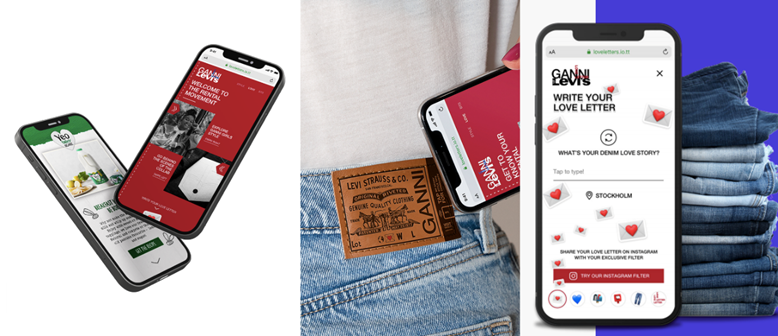Over three quarters of consumers use their mobile to learn about a product, with most wanted packaging to display QR codes, according to new research.
The report launched by SharpEnd, reveals why consumers engage with connected packaging using different technologies such as QR, NFC and AR – unearthing some surprising consumer trends and attitudes.
Key stats
• 69% (UK) and 75% (U.S.) would scan a product discover more about the brand
• 64% (UK) and 84% (U.S.) who like QR/NFC are more likely to buy a product if it featured a QR code
• 46% (UK) and 64% (U.S.) who like QR codes would pay more for a product if it featured one
• 77% (UK) and 76% (U.S.) would use their smartphone to scan a product if it was easy
• 71% (UK) and 76% (U.S.) are interested in using technology to find out more about the products they want to buy
• 65% (UK) and 74% (U.S.) would willingly take the time to work out how to scan a QR code on-pack with their smartphone
SharpEnd’s approach focuses on understanding what it actually is that people want from connected product experiences.
Sustainability is high on the agenda of today’s shoppers. This is reflected by the fact that over three quarters (75% UK and 77% U.S.) of consumers will use their mobile device to connect with products for experiences that add value to their lives such as how to dispose of or recycle a product. The recycling information provided by a connected product is location-based, so the packaging itself can advise where the nearest recycling centre is. Over half of UK respondents (57%) want to use packaging to learn about the sustainability credentials of the product compared to 63% in the U.S. Providence is also key for today’s discerning consumers as a further two thirds (63% UK and 71% US) aim to use the connected packaging to find out how the product is made.
Consumers are more likely to buy a product if the connected packaging provides information about the ingredients in the product or the materials used (60% UK and 68% US).
Supermarkets present the biggest location opportunity as 62% of UK respondents and 72% of US respondents would scan QR codes there closely followed by at home (60% UK and 66% U.S) along with restaurants (58% UK and 67% U.S.) – illustrating how experience-led connectivity is the future for retail across multiple sectors from FMCG to fashion.
Whilst brands might have been slow to adopt connected packaging in the past, over a third of consumers actually want to see a large and clear view prominent display of QR codes and over two thirds (77% UK and 76% U.S.) said they would only use their smartphone to scan products if it was easy to do so – making visibility key. In the UK 64% of smartphone users that like QR/NFC and 84% in the U.S. stated they are more likely to buy a product if it featured a QR code.
The new report is the first edition of an annual benchmark planned by SharpEnd that counts Levis, Yeo Valley, PepsiCo, Estée Lauder Companies, Campari Group and many more amongst their clients.
Two brands already leading the way in connectivity include Yeo Valley Organic who boldly announced in 2020 how all of its packaging was now connected as part of its move towards more sustainable materials. Unilever is also launching sustainability initiatives through connected packaging.
Increasing technology adoption makes connected packaging a key consideration for brands.
Out of NFC, AR and QR codes, the research reveals the expected use of connected packaging over the next 12 months to be highest for QR codes with 96% recognition from all smartphone users.
Consumer expectations of AR are different to QR and NFC, with the technology more defined by bringing an external virtual world to life, with the top three products they would expect to see AR harnessed for being: clothing (luxury), clothing (non-luxury) and footwear.
Iconic advertising executive and co-founder of Bartle Bogle Hegarty, Sir John Hegarty said of the report “Throughout my creative career I’ve always followed one simple rule. Make the product the hero. There are many ways to start a brand journey, connected packaging I would argue should be one of them. And as we live in a connected world wouldn’t it be the most obvious.”
Cameron Worth, Founder of SharpEnd says: “There’s been a lot of technology-led research over the years that doesn’t really inspire brands or marketers. It’s why we’ve explored the why and what before the how and our findings support unequivocally that an experience-led approach needs to be taken to succeed with connected packaging.”
The report features contributions from industry heavyweights including eBay, Campari Group and Newscorp.
Norm Johnston, Global Head of Advertising at Newscorp – “Do your homework. Be informed by facts, even if inconvenient, rather than hype, even when inspirational.”
Jeremie Moritz, Digital Director at Campari Group – “When you think about what is packaging today and what we can achieve tomorrow, it can truly change the approach for marketers but also for consumers.”
Charis Marquez, VP Fashion at eBay – “Connected products not only build relationships with brands, they allow us to share and connect with other people through data. This connection allows people to feel like they are part of a community with similar interests, dreams and goals.”
